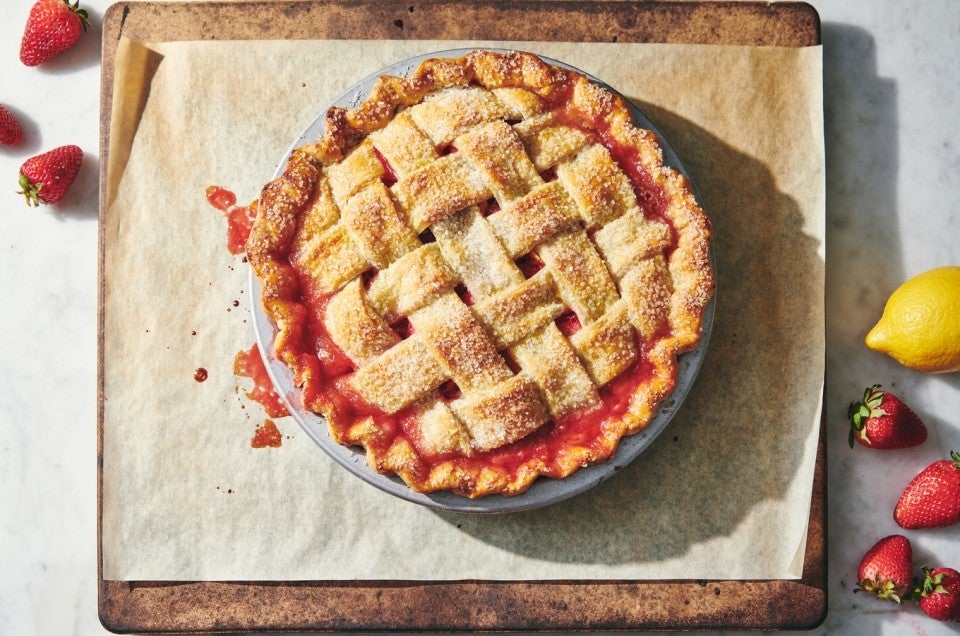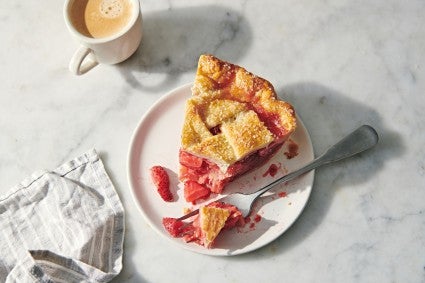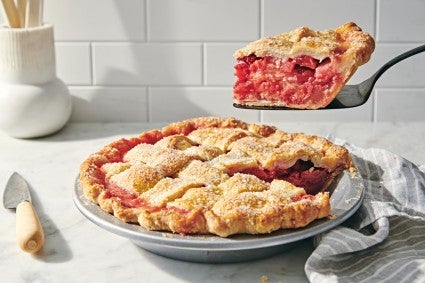Things bakers know: To avoid a soggy bottom, bake your pies like pizza
A hot baking steel or stone helps your bottom crust bake up nice and crispy.


Please don’t panic about pie. Pie should be a source of joy, comfort, and camaraderie — not stress.
But it’s hard not to worry. We’ve all seen the Paul Hollywood squint as he looms over bakers on TV, prodding and pointing out “soggy bottoms.” While it’s entertaining to watch from the couch, that image isn't helpful to have in your head when you’re in the kitchen. So how do you avoid the dreaded soggy bottom once and for all? It’s easier than it seems.
When it comes to pie, there are some basic moves that take you from an OK pie to a forkful of sigh. It’s particularly important to heat things up; specifically, bake your pie on a preheated pizza stone or baking steel.
Why? Wet pie fillings + raw dough are a tricky combination. If the bottom crust doesn’t set before the filling soaks in, it’s going to be gummy. A metal pie pan placed on a preheated surface will set the bottom crust quickest; once cooked, the liquids from the filling above won’t soak in, and as a result: no soggy bottom. (Using metal is crucial: Glass or ceramic pans don’t transfer heat as efficiently, so they can be accomplices to a sad, soggy bottom.)

Parbaking your crust on a preheated surface is another way to avoid a gummy bottom crust, as it helps the crust set before shrinking.
Line the pan with foil and weights (I use sugar; check out this previous post about toasted sugar for details) and bake on the hot stone or steel for 10 minutes to help the dough set before filling. You won’t be cooking the crust all the way, just giving the proteins a chance to set. PJ Hamel has more about that in her blog post on prebaking pie crust.
Don’t have a pizza stone? Put your biggest cast-iron skillet on a rack in the lower third of the oven when you preheat it. If it will lie flat upside down, do that. Put a half-sheet pan underneath the rack with the cast iron on it to catch drips. Plop your pie pan right in (or on) the hot cast iron pan to bake.

Of course, there are additional steps you can take for a crispier crust on the bottom. For instance, try precooking a particularly juicy filling. In addition, using the correct amount of thickener (check out our Pie Thickener Chart) keeps more of the filling’s juice away from the dough, giving it a better chance of cooking properly. Instant ClearJel is especially great for this because you can see the consistency of the filling before it goes into the pie.
Everything is easy once you know. Set yourself up for a deliciously crispy pastry under all that yummy filling by treating your pie a little more like pizza.
Got your own tips? Tell us about your pie prowess in the comments, below.
Cover photography and food styling (Lemon-Ginger Strawberry Pie) by Liz Neily.

